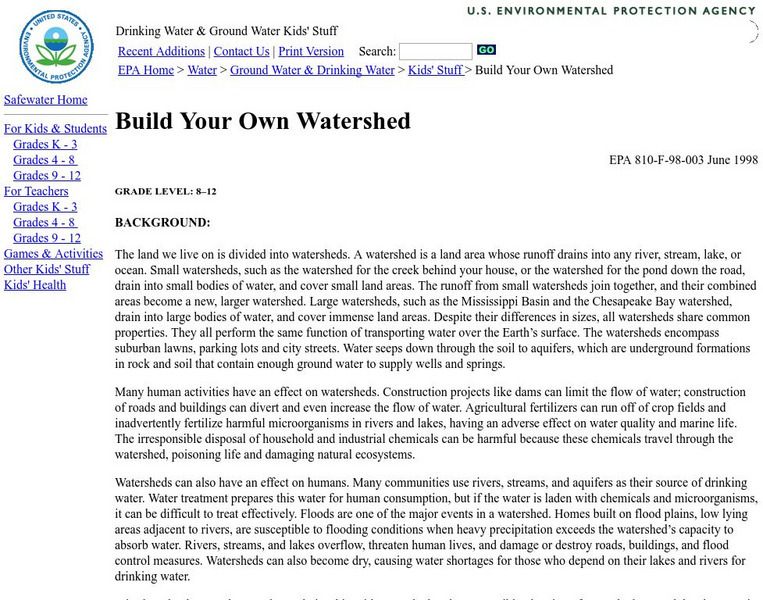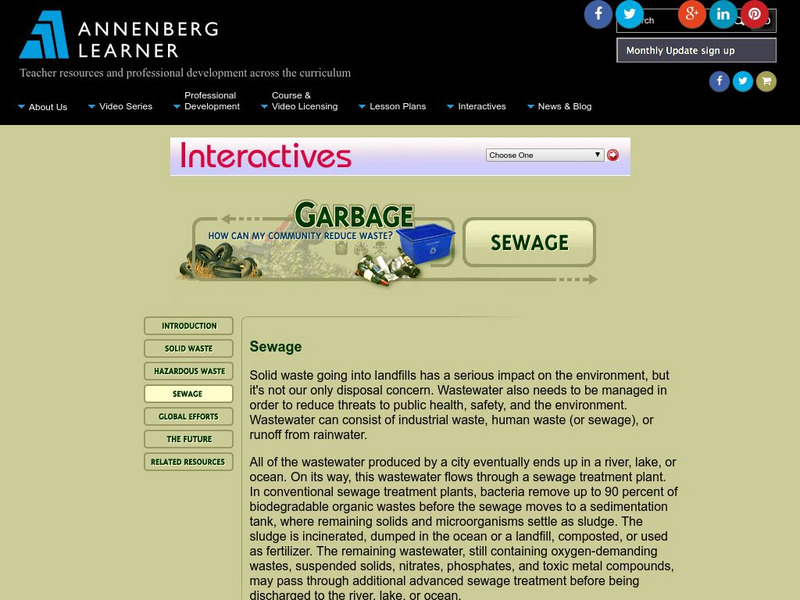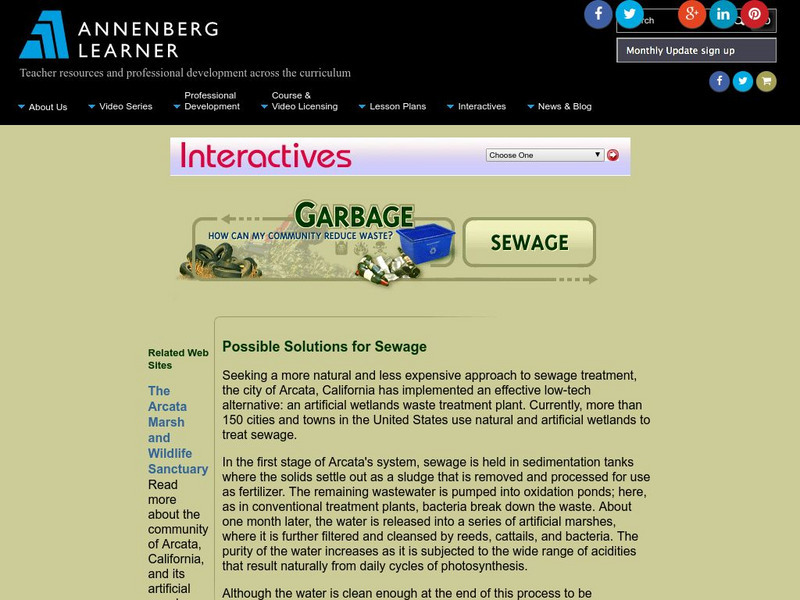Other
British Columbia Water and Waste Association
Non-profit organization that educates and trains people to safeguard public health and the environment. Water and wastewater industries are important parts of an environmental plan that ensures the future use of Canada's water supply.
US Geological Survey
Usgs: National Water Quality Assessment Program
Use this website to find out about water quality issues anywhere in the U.S.A. where water studies have been conducted by the U.S. Geological Survey.
US Geological Survey
Usgs: Water Science for Schools Water Science Storytime!
This U.S. Geological Survey website features a fictious town, Dryville, and uses it to illustrate every aspect of water management that you might encounter. Click Home to access the site in Spanish.
US Geological Survey
Usgs: Water Science for Schools Effects of Urbanization
This U.S. Geological Survey website offers a short article then lists topics that are linked to brief articles that describe that particular topic's effect on water quality in urban areas. Click Home to access the site in Spanish.
PBS
Pbs News Hour Extra: Understanding Your Water: From Source to Tap and Back Again
In this lesson students will learn about water treatment and what happens to water when it goes down a toilet and drains into sewers. Through further investigation students will understand the relationship between water treatment and...
US Environmental Protection Agency
Epa: Build Your Own Watershed
How can you learn to build your own watershed? This site features an activity to illustrate the basic properties of a watershed. Don't miss out.
US Environmental Protection Agency
Epa: Secret of Bog Creek
This site has a user guided story about a bog that has been a secret dumping ground for waste.
US Environmental Protection Agency
Epa: Surf Your Watershed
This resource provides information on watersheds, maps, activities, and links to local watershed information.
Other
Children's Water Education Council: Waste Water Watcher (Mini Unit) [Pdf]
Waste Water Watcher is a 9-page mini-unit on essential and non-essential use of water by humans.
eSchool Today
E School Today: Wastewater
Explore sources and effects of wastewater, and understand the structure of wastewater management.
US Geological Survey
Usgs: Water Science for Schools Pesticides Ground Water
This US Geological Survey site briefly discusses the basics of why pesticides are increasingly found in our ground water. Click Home to access the site in Spanish.
US Geological Survey
Usgs: Water Science School:water Quality
Learn about the importance of water quality and environmental influences that reduce it.
Other
Foster City Lagoon System
Provides information on a chemical that was added to lagoon systems to reduce odor and algae.
Other
Us Peroxide
US Peroxide is the leading supplier of hydrogen peroxide and peroxygen based technologies and services for environmental applications. Their site includes information about hydrogen peroxide such as common applications, physical and...
Annenberg Foundation
Annenberg Learner: Garbage: Sewage
This concise article looks at the definition of sewage and the cost of treating waste water.
Annenberg Foundation
Annenberg Learner: Garbage: Sewage Solutions
A natural and less expensive approach to sewage treatment is discussed in this article about a California city that uses an artificial wetlands waste treatment plant.
Other
Dcm Process Control: Biological Oxygen Demand (Bod)
This is a resource that shows an example of biological oxygen demand.












